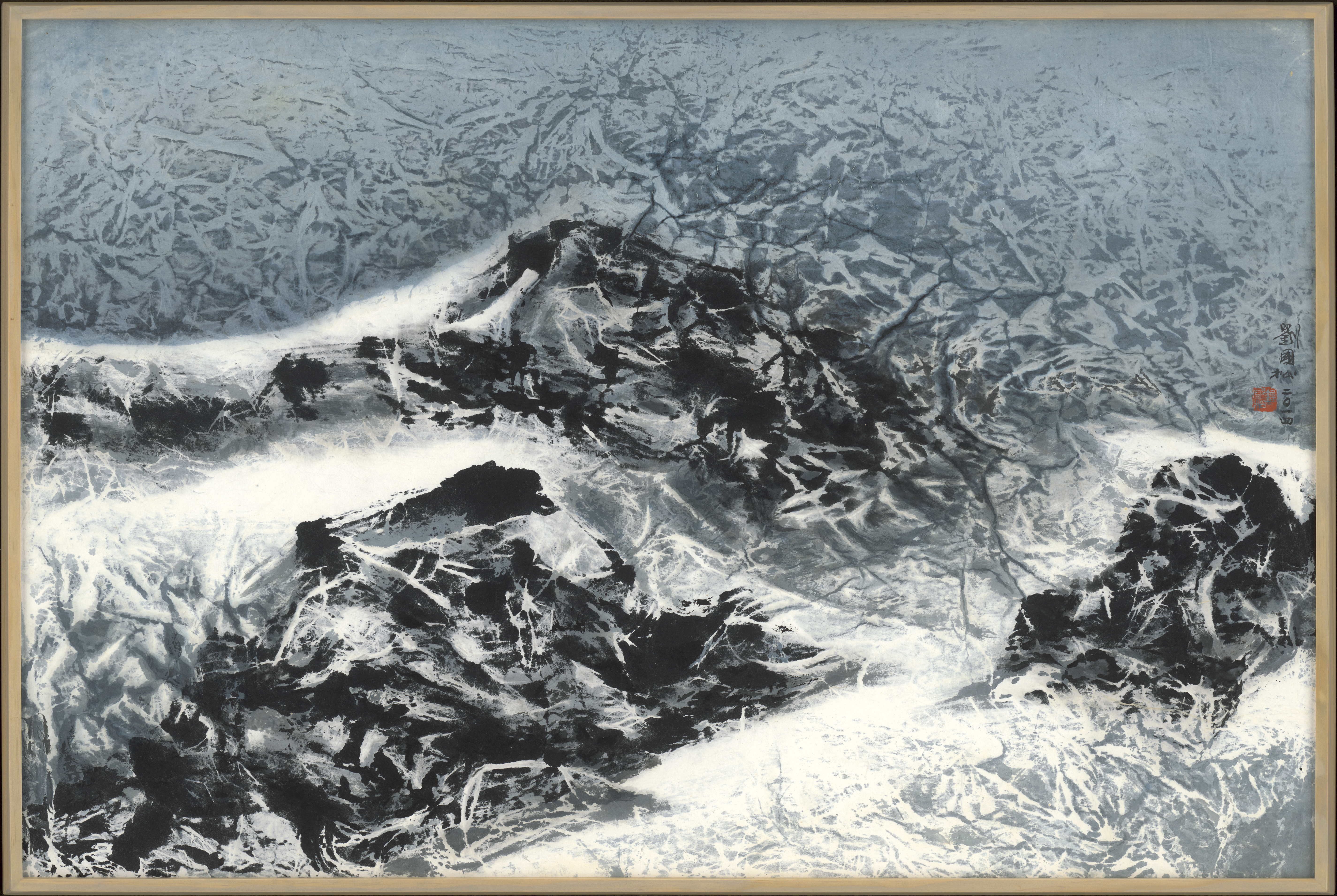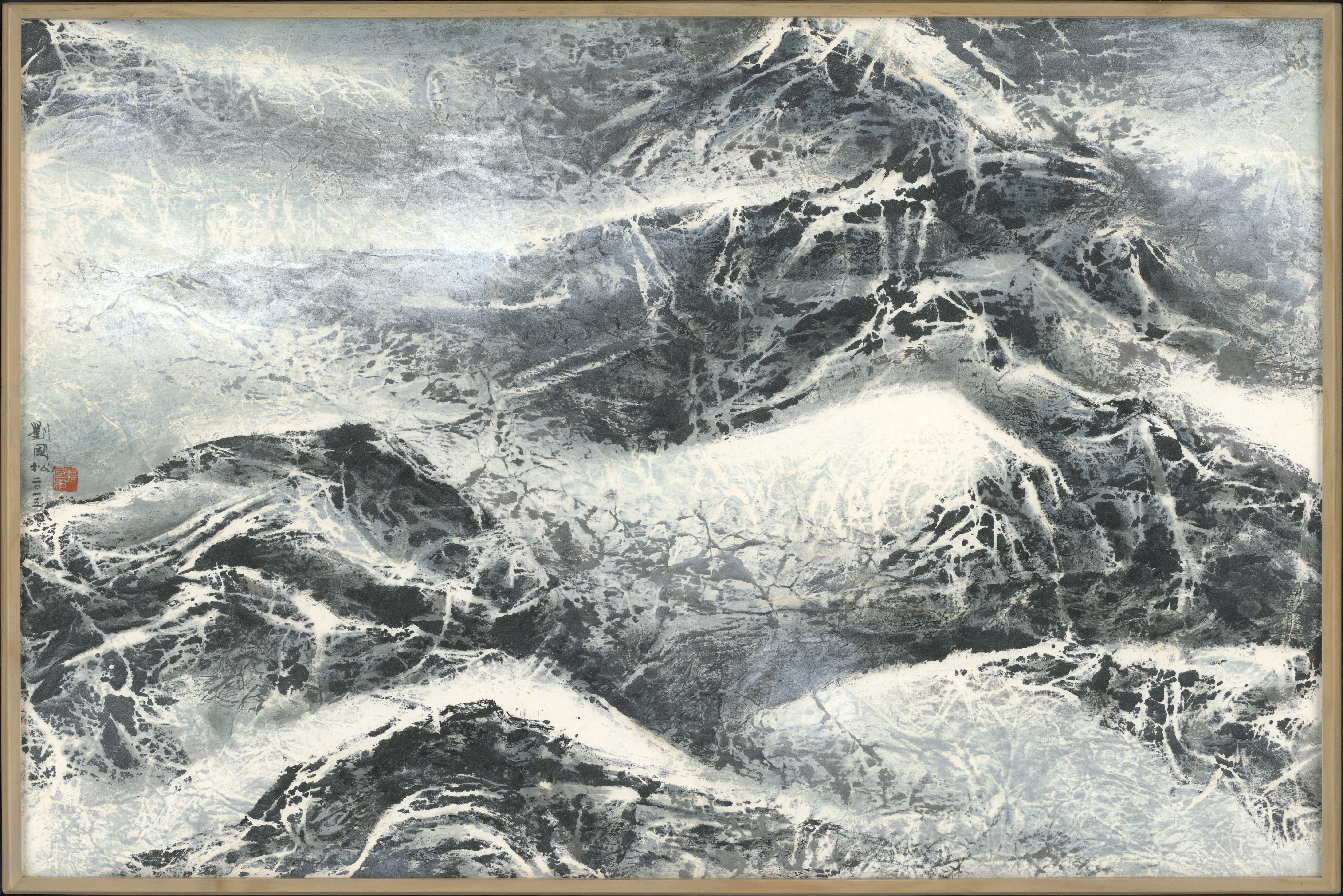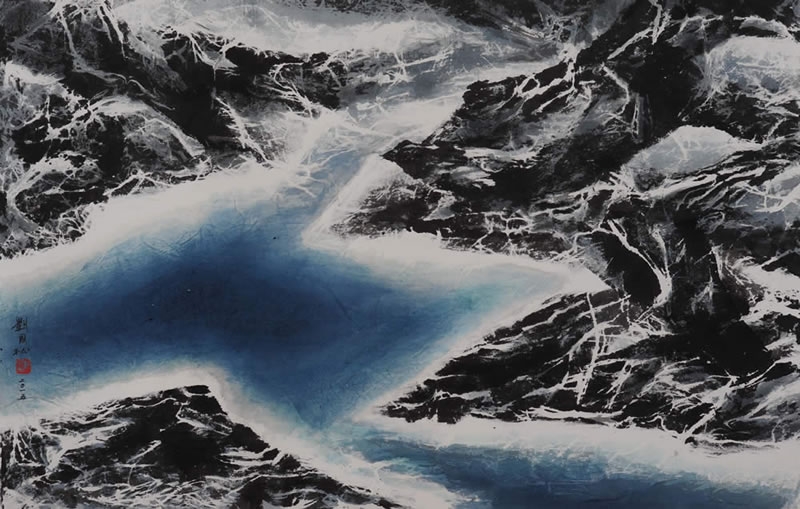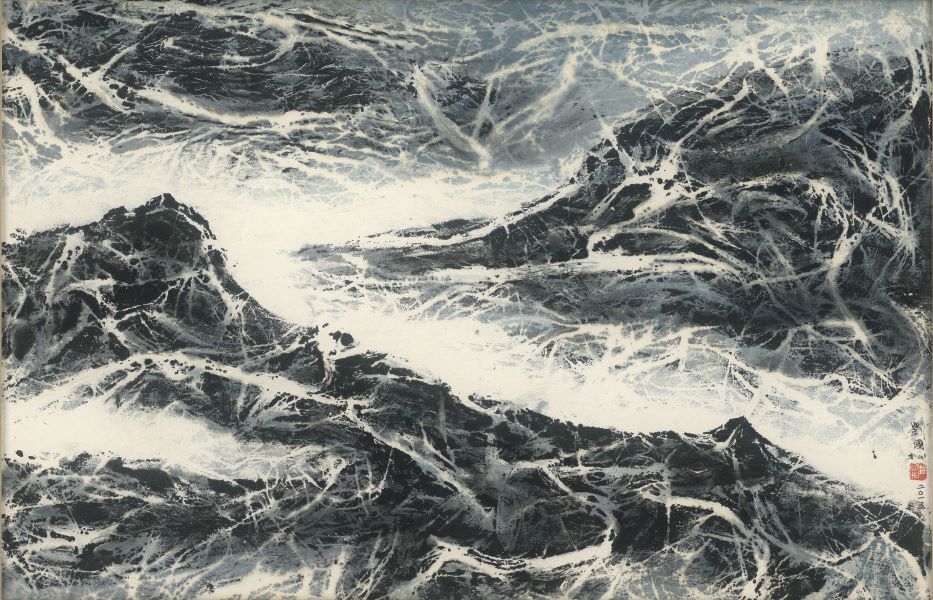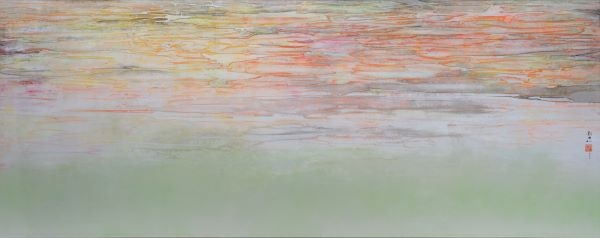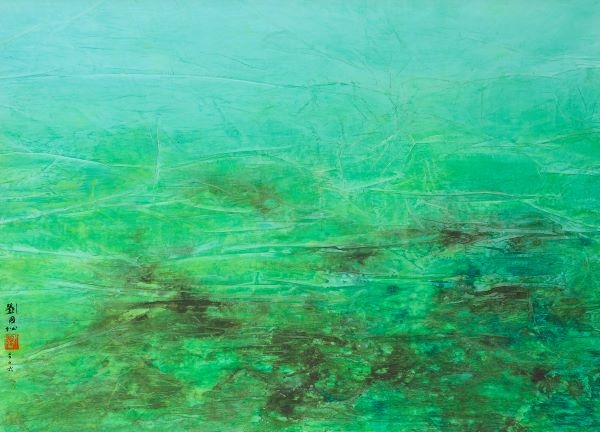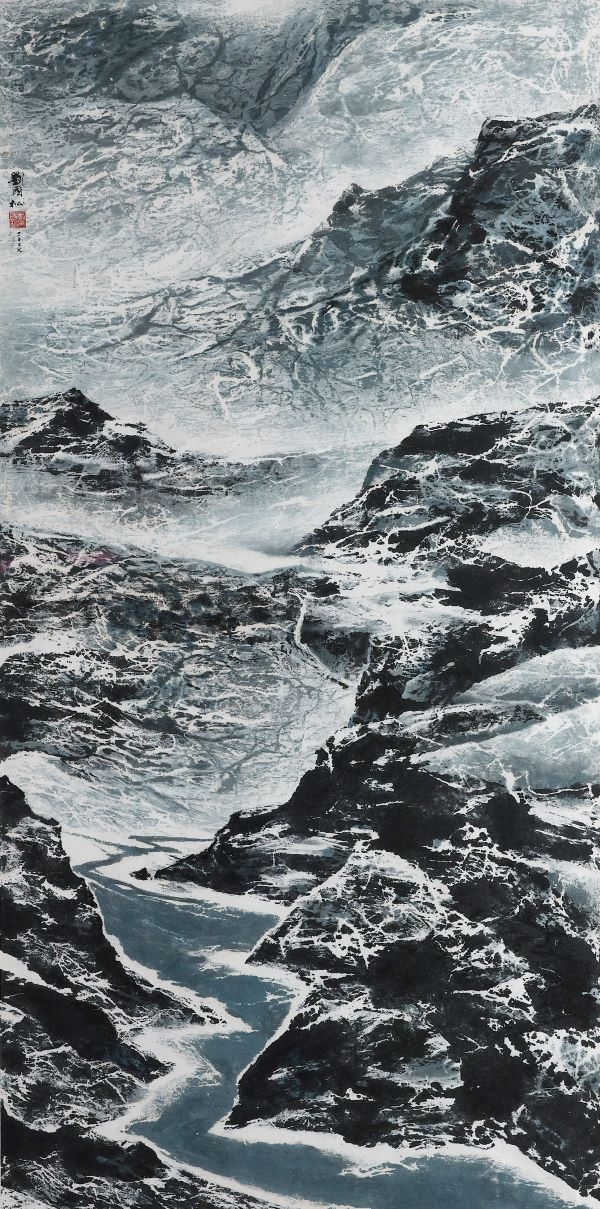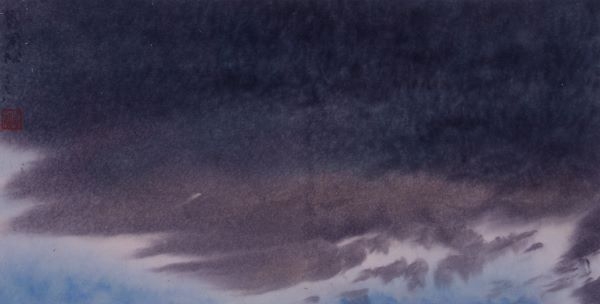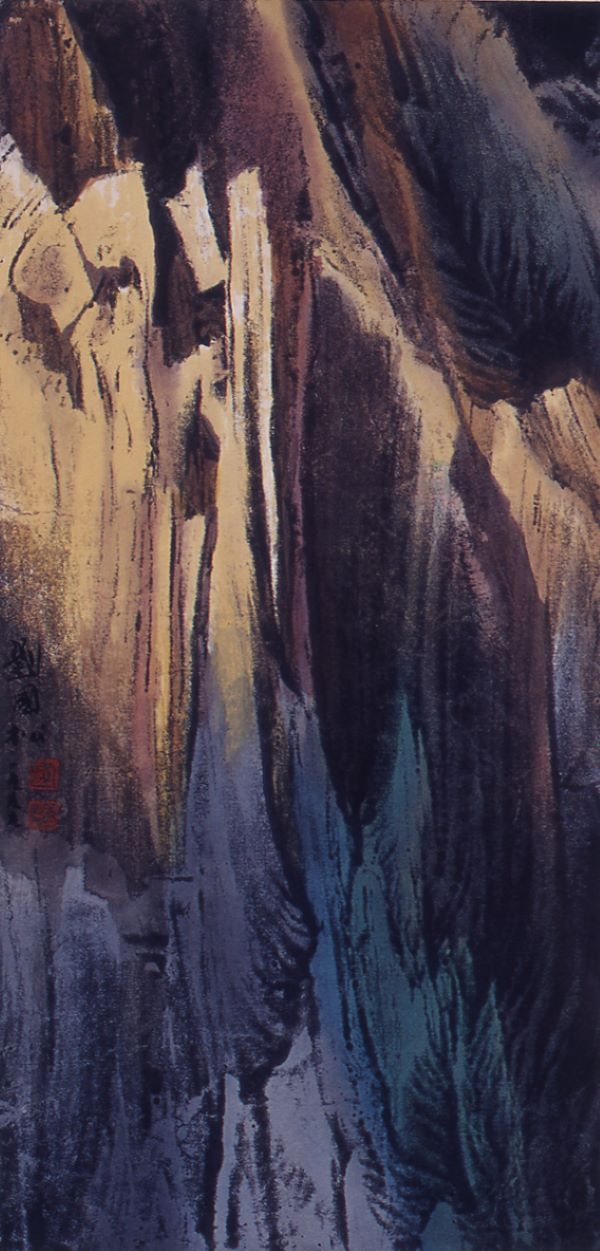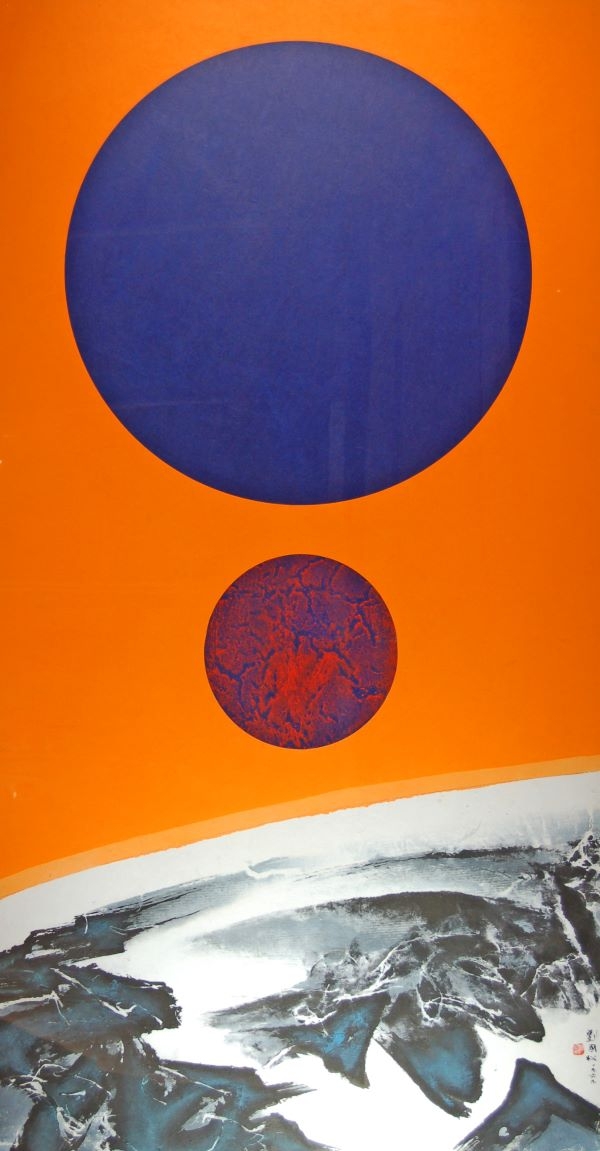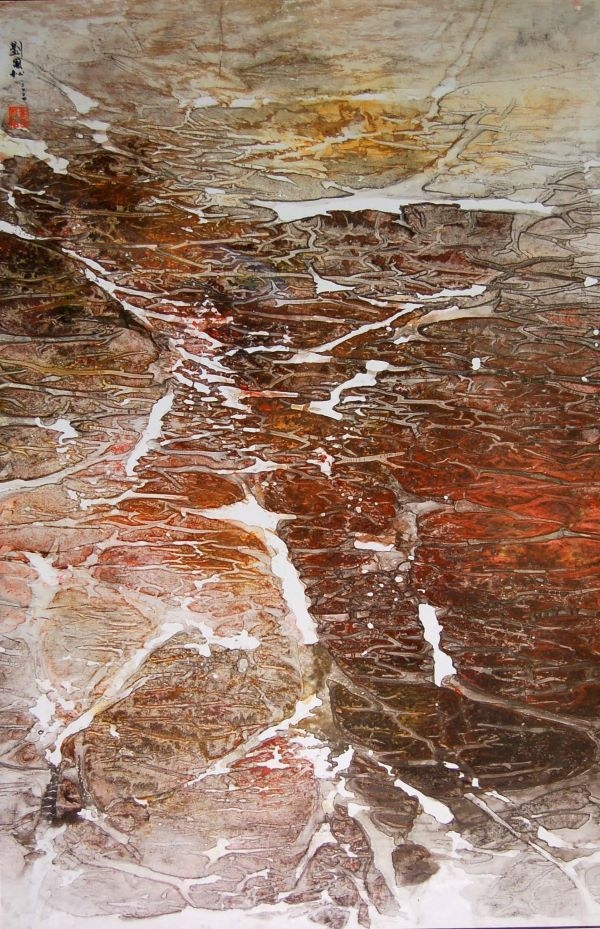1932年生於安徽,祖籍山東青州。1949年定居臺灣,曾任香港中文大學藝術系主任、美國艾荷華大學與威斯康辛州立大學客座教授、臺南藝術大學造型藝術研究所所長、大陸多所重點大學與美術學院的名譽教授,現任臺灣師範大學講座教授。
劉教授14歲在武昌開始學習傳統國畫,20歲改習西畫。1956年臺灣師大藝術系畢業後,隨即創立五月畫會,發起臺灣現代藝術運動,主張全盤西化。五年後深感一味追隨模仿西洋現代藝術思潮與流行畫風之不當,更對發展與宣揚民族傳統文化產生了強烈的使命感,開始宣導「中國畫的現代化」,提出了「模仿新的,不能代替模仿舊的;抄襲西洋的,不能代替抄襲中國的」的鮮明主張。
現代水墨畫1961年在臺灣開始,1963年即已形成氣候。隨後影響到東亞儒家文化共同體其他成員國的水墨畫家。1983年初,劉國松應中國美術家協會與中央美術學院之邀在中央美術學院三次公開演講,並同時在北京中國美術館個展後,三年內在國內巡迴展出十八個主要城市,並到處演講與講學,促使傳統的文人畫的一元化走向了多元的局面,1985年第六屆全國美展曾頒給他特別獎。2007年故宮博物院破例在中國文化經典的殿堂舉辦「宇宙心印‧劉國松繪畫一甲子」特展,這不但肯定他在歷史上的地位,也說明了現代水墨畫已進入中國美術的主流。他又先後獲得了兩岸最高的「國家文藝獎」(2008年)、「中華藝文終身成就獎」(2011年)和「第36屆行政院文化獎」(2017),同時也獲選為中國文聯的榮譽委員,更是第一位華人畫家獲得美國文理科學院的外籍院士 (2016)。1965年以來舉辦個展近百次,半數以上為美術館邀請,收藏其作品的美術博物館包括故宮博物院,大英博物館共有七十餘間。研究他的中、英、德文專著有十一本,美國與德國的大學教科書引用他的理論與作品圖片者,已有六本。被譽為現代水墨畫之父和中國現代繪畫的先驅。
Liu Kuo-sung was born in Anhui, though he traces his ancestry to Qingzhou, Shandong. He settled in Taiwan in 1949. Through the years since then he has served as the Dean of the Faculty of Arts at Chinese University of Hong Kong, visiting professor at the University of Iowa and University of Wisconsin, and Dean of the Graduate Institute of Plastic Arts at Tainan National University of the Arts.
In addition, many major universities and art schools in mainland China have named him an honorary professor. He is currently a chair professor at National Taiwan Normal University (NTNU).
Liu Kuo-sung began studying traditional Chinese painting in Wuchang at the age of 14, and at 20 he switched to the study of Western painting. In 1956, immediately after graduating from the Dept. of Fine Arts at NTNU, he founded the Fifth Moon Group, which launched the contemporary art movement in Taiwan and advocated full westernization of art. However, five years later he sensed that following and imitating exclusively Western contemporary art trends and styles was wrong, and he felt a powerful calling to promote and develop traditional culture. He began promoting “the modernization of Chinese painting” and raised a fresh new proposal—that “imitating the new cannot replace imitating the old; copying from Western art cannot replace copying from Chinese art.” Contemporary ink painting, which had started in Taiwan in 1961 and become fashionable by 1963, soon influenced ink painters in other countries in the East Asian Confucian cultural sphere.

